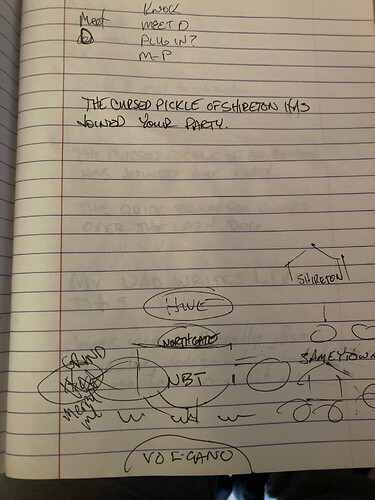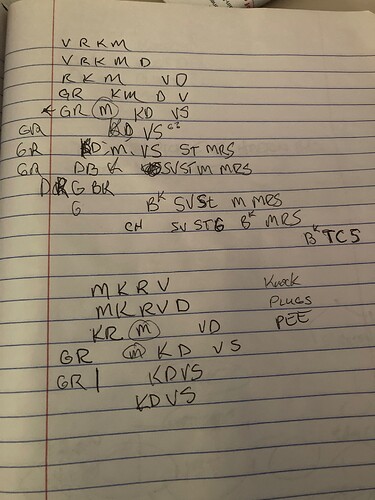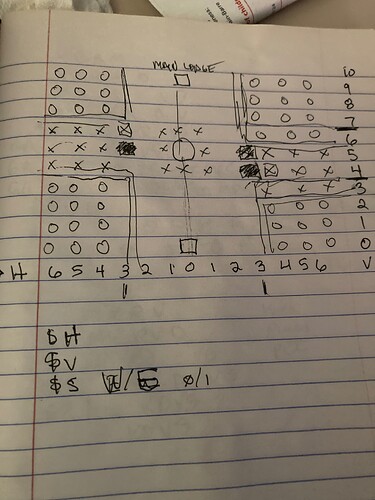I had exactly this experience for my last game, which went “white whale” for a half decade because I didn’t feel I had the writing chops to do the story justice. Then the LLMs show up and it’s done 9 months later. It’s hard to be embarrassed for using the bot when the game wouldn’t exist without it. IMHO.
Hot take: the IF Archive has virtually failed in its mission.
Why? There’s a 2002 Wario Land 4 CYOA tie-in that’s in danger of becoming lost media.
The archive has ignored Wario’s massive cultural stature and piles of fictional treasure in order to focus on preserving non-commercial, community-generated content. And that’s a crime.
(There are also Zelda CYOAs published the same year, but who cares about those.)
My take is that LLMs can be (somewhat) good at brainstorming. This is how it works:
At my studio, we do graphic design, we always have big brainstorming sessions at the beginning of every project, where everyone is requested to bring free-style ideas. Like, you say what you want, no matter how stupid, because that can spark an idea in someone other’s mind. It’s like harvesting for inspiration in RL but the operation taking hours instead of weeks or months.
The same applies to i.e. ChatGPT. One can ask for ideas; the bot will respond with something very based or inappropriate; you read the lines and (sometimes) a better idea sparks up. All the bot’s suggestions will be dropped (really: they are the most basic, mainstream ideas one can have) but they would prove useful anyway.
The same can be acquired by 1) playing a lot of other games to find inspiration; 2) reading whatever books one likes; 3) go out and get a beer or stroll a park. But all of these will take 100x the time.
Ofc, the best ideas will STILL sprout from doing something completely unrelated. Like folding the damn sheets of the bed or cleaning the shit left by your wife’s beloved chihuahua from the sofa. So, never forget to have a chihuahua.
To paraphrase a famous philosopher, the best ideas are rarely produced by the brain of a body sitting behind a desk.
This is why there are waterproof shower note tablets. And I’m sure there exists a “remember this!” instant button/voice recorder for the car.
I’ve noticed that when I specifically hand write notes that cements the idea in my brain and I don’t need the physical note. Like the physicality creates a neural pathway in my brain. The stuff I really need to note is like phone numbers and addresses and URLs with specifics. Also doodling how ideas connect - these notes usually make no sense later and look like madman scribbles but are just brain-dump in the moment.
I have exploited this with my own process - I know many authors scramble “I’ve got to write this flash of inspiration down so I don’t forget it!” I’ve found through experience that I don’t forget really good ideas so it’s kind of an automatic filtering system when my brain is just noodling - if a great riff happens, I’ll keep thinking about it and use it somewhere.
CPoS
“The Cursed Pickle of Shireton has joined your party” was the motivational sentence I was driving for in that game. I scribbled a preliminary map. At the very top was some remaining sequencing from RSPM.
Reviewing this, apparently I originally designed the map in reverse of how it turned out - in the game you go west to get to Sameytown and Shireton from NewBeeTown. I didn’t actually have a volcano, except the opening was inspired by To Hell in a Hamper - instead of crashing into a volcano, it was an airship being attacked by giant bees and landing in NBT and I think “volcano” was just my placeholder for the idea of that sequence since in the game the airship flies over the desert.
RSPM
This was scribble figuring out which robots and characters were together at different points during the party/murder with sex robots timeline.
I’ve actually heard about this one! It was a short gamebook that was a play-by-play of Wario Land 4, in a series of three other books. They did Super Mario Bros. 2 as well.
The Wario one has secondhand copies you can buy online, and I know a friend who has a copy of it. The two reviews of it on the Internet are worth reading.
Like most of the rest of the series, this is a waste of good paper. Although it tries to stand out by adopting a first-person narrative, Wario’s greed and arrogance do little to disguise the fact that this is a blandly-written and incomplete summary of somebody’s experiences playing a video game. There’s only so much you can read about jumping on monsters and picking up treasures before you lose interest, and this book does nothing to keep the reader’s attention. There’s no game system, so the fighting and collecting have no meaning to the reader, and there’s only one ending, so all of the choices are meaningless. Every choice is of the form “move forward, or else take a moment to do something and then move forward as if you hadn’t done anything.” Even where the game has puzzles, the reader doesn’t get to solve them but instead reads about how they were solved! Perhaps this thing serves as a hint book in disguise (though it’s far too vague to be very useful even in that role), but as a gamebook or as a novel, it is a total failure.
Utterly devoid of any real purpose of accomplishment, although based on a particularly enjoyable GBA game of the same name the “Wario Land 4” gamebook is nothing short of a complete disaster. Zero story, zero interactivity, zero weight to any choices, next-to-no resemblance of the source material… there’s nothing original here, and it doesn’t seem that an ounce of effort was poured into the making of this lackluster companion. Steer clear at all costs; not even the most devoted fans of either Nintendo nor the game in question will want anything to do with this waste of space and time.
I’d love to see a playable, online adaptation of one of these books – they’d be really easy to recreate.
I bought it from a school book fair along with one of the Zelda books as a kid, and I sadly no longer own it.
I looked around but it seems there are only a few copies left on various bookselling sites. It’s not at any libraries, according to WorldCat.
Judging by the only scan I can find, the prose isn’t great, but it’s what you’d expect from a licensed novelization aimed at kids, and I remember getting a kick out of it.
It’s a cash grab, but seriously, any Wario-themed cash grab is appropriate by default.
Oh yeah, I definitely had one of those Mario CYOA series as a kid. I remember they were filled with puzzles, like crosswords and such, that you had to solve to determine what option you ought to choose. I particularly remember one where you’re decoding the labels on two levers that you might pull to escape a conveyor that’s sending you to your doom, and they decode to “REVERSE” and “EMERGENCY SLOP”, and the joke is on you if you jumped to any conclusions before you’d filled in the entire word. The author of that one definitely absorbed Infocom’s style of snark.
Easy, yes, except for the step of getting hold of of the right lawyers at Nintendo Co. before the wrong ones get hold of you.
This wario thing is you taking the piss right?
I see several uses of LLMs, but there are more in the back of my mind.
-
help with code - any LLM can help map out code in any of the platforms. you can significantly speed up development. You can even tell the chatbot to leave basic descriptions and not to actually write any of the story. You can also get help with structure. Sets of rooms, puzzles, merge points, end game.
-
help with story structure by analyzing plot, story, character, missing elements, dead ends, red herrings
-
parser helper as has been discussed
This wario thing is you taking the piss right?
Mostly yes, but the books genuinely are in danger of becoming lost media AFAICT.
Isn’t minimising pointless player annoyance a primary design concern? It should be.
I wouldn’t put it quite so simplistically, but essentially, yes. I still vividly recall my anger (many years ago, in a game I do not recall) at the following exchange:
? dig
You must supply direct object
? dig soil
You must supply indirect object
? Dig soil with spade
You can’t do that
? aaaargh!!!
You can’t do that
I’m not sure you need an LLM for that, but rather a solid physics engine.
One of the most successful elements of Breath of the Wild is that all of the physics were implemented as a general system, rather than a set of specific exceptions/actions. That means the designers might have expected you to open a given heat-sensitive door using the torch in the next room, but you can also do it with a thrown fire flower, or a flame arrow, or a bonfire and a fan, without any of those solutions having been encoded by the designers.
In your specific example a more traditional “NPC AI” (i.e. not an AI at all) might react to distracting noises by looking away without the designer having intended that as a way to solve the given puzzle at all.
In BOTW, didn’t the developers specifically create a chemistry engine, which would have involved deciding on the effects of fire, water, ice, electricity, and wind?
The physics engine wouldn’t do anything more than what the designers/devs decided it should do. eg. I assume you don’t run out of breathable air if you light a fire in a closed room in BOTW, but wind, burning other material, etc. still applies in the closed room.
I think the designers wanted fire to interact with certain things — albeit a lot of things and probably in broad categories, as you implied. But they still decided on those things nonetheless.
This also might completely circumvent a puzzle (e.g. finding a key to the closet to get a guard outfit and disguise yourself as a guard and escape) or even the entire game. There are multiple games where the entire puzzle revolves around getting past a single NPC, and having a random leaf on the ground do that would make obsolete the author’s intent.
Regardless of how it’s implemented and how much of it was intentional on the part of the devs versus an emergent result of the systems built, I think an important thing to remember is that Breath of the Wild was made by a company worth tens of billions of dollars employing a team of dozens if not hundreds of people while I get the impression most IF is written by a solo author in their spare time.
But yeah, if you could employ the systems modern open world games run on to a text-only parser adventure, you could probably achieve results comparable to the hypothetical LLM that can actually remember the world state well enough to be consistant and no hallucinate, at least outside people deciding to play extreme Chaotic Stupid or some edge cases… Still, even with a physics engine, the developer still needs to think of allowing the player to generate a physics object from a random leaf, even if the engine frees the dev from having to program every possible interaction.
Of course, BotW probably has its “You can’t do that” edge cases, they just aren’t as noticeable/frustrating since every legitimate use of a usable item is mapped to a controller input, menu option, touchscreen gesture, etc. instead of the tendency of parsers to vary in what verbs are legit for which objects and what grammar they understand.
They did, but having done so, emergent behaviour not intended by the designers then became possible. A good one (from Tears of the Kingdom) is the fact that they made lightning generators for one puzzle, and some things that spun around when charged in another. Players extracted these from their relevant areas (also not intended) and made helicopters ![]()
My point was that allowing systems to interact in logical ways to enable behaviours that make sense inside the world model, but were not specifically planned/intended by the designers, doesn’t require an LLM to improvise. In fact it would seem (from my limited understanding) that it’s just what Inform is good at.
Yeah, but the effects of lightning generation and spinning devices were (presumably) planned, and I’d expect the developers were aware of lift physics, which is a big deal.
My point was that allowing systems to interact in logical ways to enable behaviours that make sense inside the world model. In fact it would seem (from my limited understanding) that it’s just what Inform is good at.
I’d agree. But I think people who want to use LLMs want to accomplish this sort of thing without schematics whatsoever.
Like, in Inform 7, you might need to define a leaf as being something the player can pick up (actually, that’s probably defined by default), you’d need to define ‘throwing at’ as an action, define pick-up-able objects as something you can throw, and define how NPCs react to thrown objects. And there are emergent things that can happen, eg. if you overlook that other types of NPCs will react in the same way as guards.
By contrast, LLMs “know” how leaves, throwing, and sentient guards work right away. (Though they may not come up with the player or author’s expected result).
In reality, the LLM developers probably explicitly configured a lot of things before the users got to it. We generally don’t know exactly at what level they did this, so we don’t know how much of an LLM’s output is truly emergent from it being able to process language at the most basic level.


